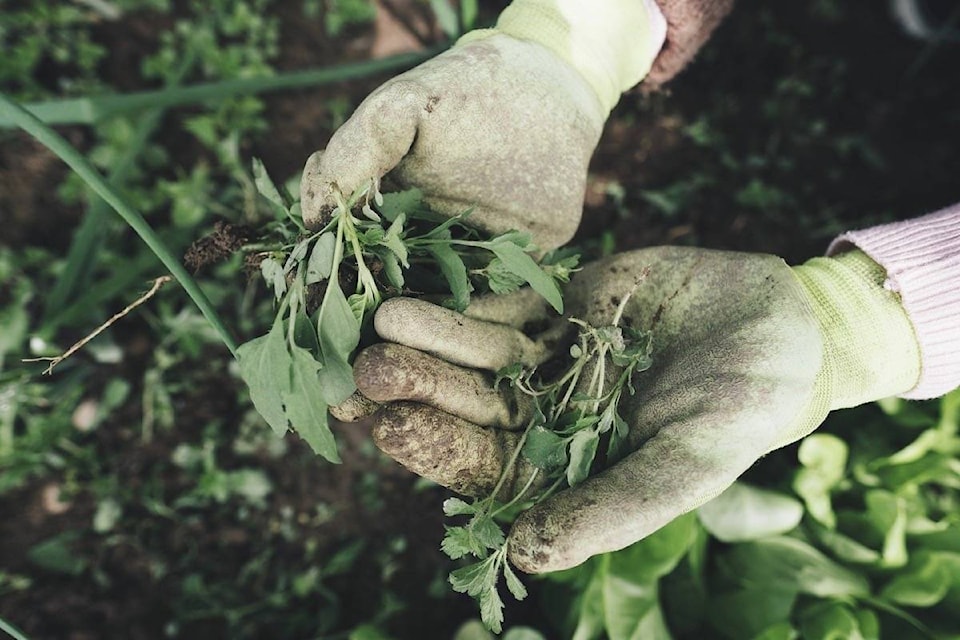Dr. Catherine Tarasoff
“This is the year I’ll stay on top of my weeds.”
While many home gardeners say this every spring, this year actually is different: most of us are home all day, every day. Now that you might finally have time to take on the battle, start by getting to know your enemies. Every hour you dedicate towards understanding the biology of weeds will save you countless hours of pulling out, hoeing under, and cursing at those vigorous garden invaders.
Annual weeds survive just one year. If you can prevent seed production, you’ll have much less work the following year. However, the battle is not quite as simple as “zero seeds one year = zero weeds the next”, as some seeds can wait in soil for several years before germinating. Still, each year that you prevent seed production is progress.
Biennial weeds live two years. They produce a rosette (a circular-shaped, usually low-growing cluster of leaves) in year one and flower in year two. If you are able to remove the rosette either in the first year or before it flowers the second year, the plant won’t be able to successfully produce seeds.
Perennial weeds live three or more years and can produce seeds each and every one of those years. The sooner you can remove a perennial weed, the happier you, and your garden, will be.
Many weeds can reproduce both sexually (through seed production) and asexually (through the production of identical “baby plants” via fragmentation, runners, bulbs, etc.). Knowing how your weeds reproduce is an important step towards controlling them.
A gardener has three main weed control options: manual (pulling, digging, mowing); chemical (herbicides); and cultural (any practices that help your desired plants outcompete your weeds). Effective use of these tools requires that you understand the biology of the weed(s) you’re trying to remove.
Blueweed — a biennial weed with many flower buds at the base of the stem — is a perfect cautionary example. If a gardener mows blueweed once the weed has sent out a flowering stem in its second year of life, the buds that remain at the weed’s unmown base will be triggered to grow. All of a sudden, you’ll have multiple flowering stems instead of just one, and each one will produce seed. For this tap-rooted plant, manual pulling as early as possible is the best option.
Canada thistle — a perennial that mostly reproduces via asexual “running roots” (rhizomes) — uses a different trick to outsmart gardeners. When Canada thistle is mowed, the underground rhizomes are triggered to form new plants.
If you want to make a big problem even bigger, just till the infested area: broken rhizome fragments will also form new plants. In Canada thistle’s case, a gardener’s best option is chemical control combined with cultural weed control.
Good luck, and happy gardening!
Dr. Catherine Tarasoff is a professional agrologist and senior plant scientist with Agrowest Consulting. Look for her home gardening and yard advice monthly, brought to you by the Thompson Nicola Invasive Plant Management Committee (on Facebook @TNIPMC).
editorial@accjournal.ca
Like us on Facebook and follow us on Twitter
